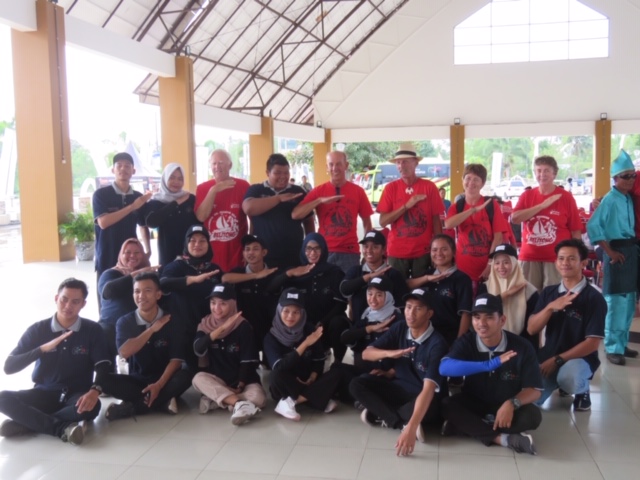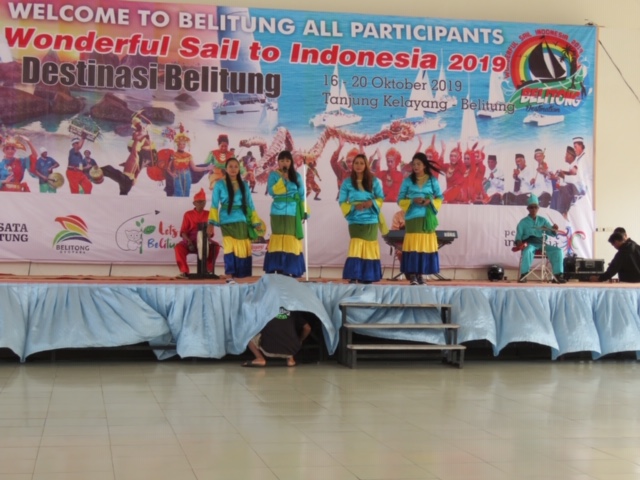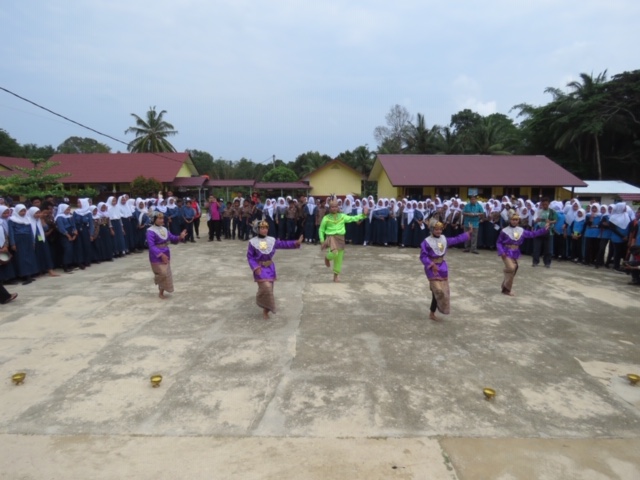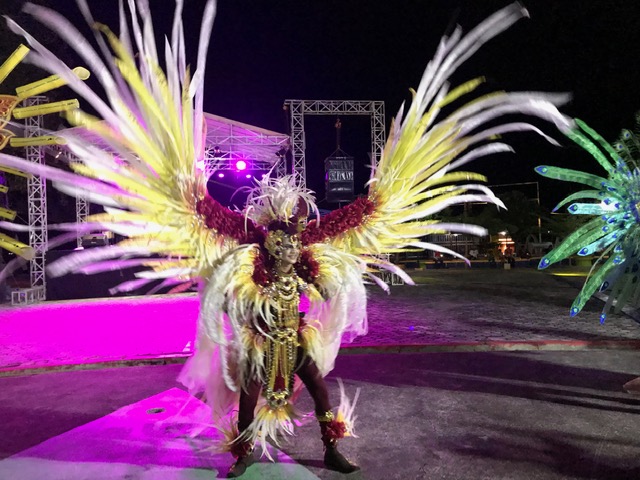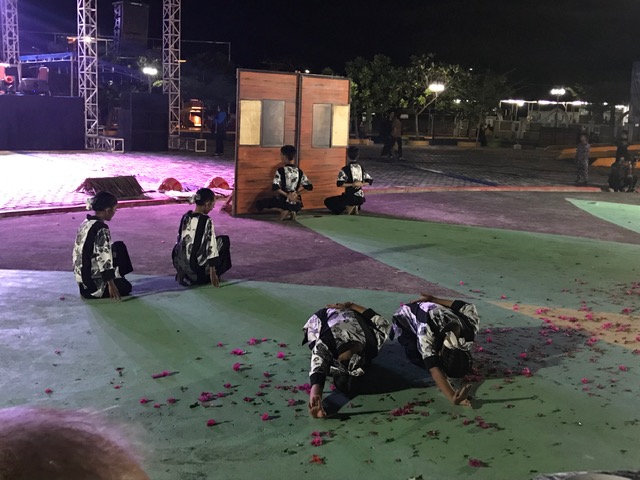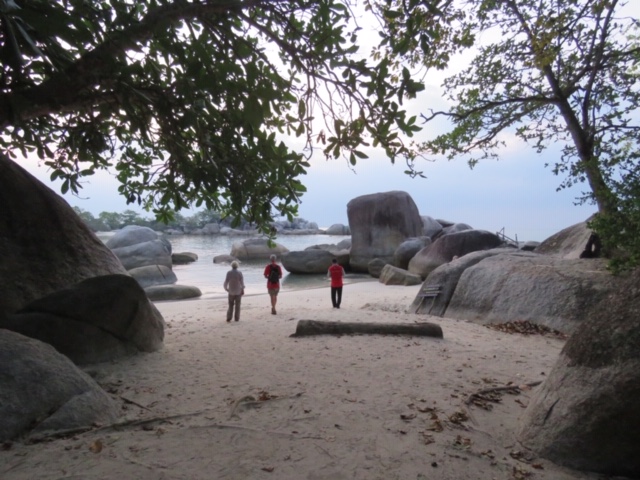Blog 71. Belitung cont. 20 October 02.33.07S 107.39.72E

Alcedo
David Batten
Mon 21 Oct 2019 23:10
Stuart, Hugh, Helge, Mrs Helge (Morild) and Karen from Taworri I wearing the “T” shirts with the smartly dressed volunteer guides.
Yet another built specially stage with the singers and “band” who welcomed us. The sound systems have all been overwhelming loud, this one apparently giving problems being sorted by the fellow under the blue.
The actual tour for Belitung started on the 17th October with another presentation of polo shirts and a very nice flask for water or hot drinks, plus some bags. We now need to go somewhere where some rather super size “T” shirts would be appreciated gifts and we have a large stock of “Wonderful Indonesia” bags. I wonder if the flasks are as a result of us telling the Ministry of Tourism that we will not accept water in the one cup plastic containers with a straw that we see littering the islands everywhere. Since putting it on record, we have not been offered them at gala dinners etc.
First tour stop, a local junior high school, where we had the traditional dance, a dancing lesson, refreshments and a chance to talk with the children to encourage them to learn and practice English.
After visiting the junior school, we went to the Geopark Tourism Information Centre in, I think, Tanjung Pandang, which did give us an understanding of the main features of Belitung, namely Tanjung Pandang granite rock and old Tin mines, some of which are being restored by re-landscaping and planting mangroves etc to clean the water, mitigate the effects of climate change and provide a tourist destination.
The Belitung Mangrove Park with its miniature Ship Restaurant where we had lunch (traditional, sitting on the floor)
After lunch, back to the boat to prepare for the costume show and gala dinner.
One of the costumes on show, shades of Trinidad Carnival but more covering of body parts.
This evening turned out to be one of the best we have been too, with very athletic dancing a good dinner and a very good band for dancing the night away.
One of the dance routines that told a story and was very different to any others we had seen
The other highlight of Belitung was a private tour to the Peramun Hill Granite Forest Geosite. We were joined by Hubert and Marguite from Chilli B, last seen on the WARC in 2016 in Tahiti, so it was a very pleasant surprise to see them in Belitung. They had joined the other Indonesian Rally, which was a pretty good non event, not worth joining and so a number of the boats from that Rally, came and joined ours. As they have the same ideas about conservation and respect for the natural world, we were pleased to have them with us, along with their 2 guests.
Nearly at the top of the forest hill and the most extraordinary photo opportunity yet. Ship’s Boy, Hubert and the Skipper indulge in childish fantasy
The Rainbow Beach, because according to our guide, Kiki, unless you have stepped foot on Rainbow Beach, you have not been to Belitung. It was beautiful
This was the real attraction for the tour, the Belitung Tarsius, which inhabits the dry and shrub land and the secondary dry land.
The Tarsiers is the world’s smallest monkey species, a nocturnal animal that feeds on insects and is only found in parts of the Phillipines, Kalimantan and Sumatra. Its habitat is threatened by deforestation, making it yet another endangered species. The local community in the Peramum Hill Forest have undertaken to protect the forest and, in particular the Argentata trees which grow well in the highly acidic soil. As part of this conservation effort and no doubt to raise cash to support themselves and their project, they have developed the area for daytime tourists to walk in the woods and climb to the big granite rocks at the top of the hill. By night time, you can arrange with a guide to have a traditional dinner on site and then go out with the rangers to find and photograph a Tarsier. The rangers were charming and we did have a serious discussion, as much as was possible with the language barriers, around how much this tourism was stressing the Tarsiers. We are very much hoping that they understood the need to balance income versus preservation in favour of the Tarsiers survival and they are apparently starting to limit nocturnal tours. It was a great experience in every way, not least because of the contact with the local rangers.
Alcedo
Sent from my iPad
